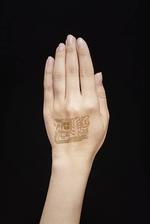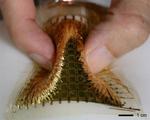Other

“A current area of intense interest in nanotechnology is van der Waals heterostructures, which are assemblies of atomically thin two-dimensional (2D) crystalline materials that display attractive conduction properties for use in advanced electronic devices. A representative 2D semiconductor is graphene …

“A hypoallergenic electronic sensor can be worn on the skin continuously for a week without discomfort, and is so light and thin that users forget they even have it on, says a group of researchers at the University of Tokyo …

“Researchers at the University of Tokyo working with American colleagues have developed a transparent, bendable and sensitive pressure sensor. Healthcare practitioners may one day be able to physically screen for breast cancer using pressure-sensitive rubber gloves to detect tumors, owing …

“A small team of researchers at the University of Tokyo has created a polymer that can be repaired when broken into two parts by applying a small amount of pressure at room temperature. In their paper published in the journal …

“University of Tokyo researchers and their collaborators at RIKEN observed an unexpectedly large thermomagnetic effect, called the anomalous Nernst effect, in an antiferromagnet, a type of magnetic material, for the first time. The study’s findings, demonstrating a new method …

“A University of Tokyo research group has found that the superconductivity of materials in strongly correlated electron systems—that is, materials characterized by strong interactions between the electrons—can be enhanced beyond that achieved in thermal equilibrium by irradiation with …

“A group of researchers at the University of Tokyo and their collaborators have figured out how ladybugs fold their wings by transplanting a transparent artificial wing onto the insect and observing its underlying folding mechanism. The study’s findings, which …

“The payload of a robot is a well-defined number that usually refers to how much mass its actuators or mobility system can comfortably support. The payload of a human works in a similar way, except that sometimes we can cheat …
